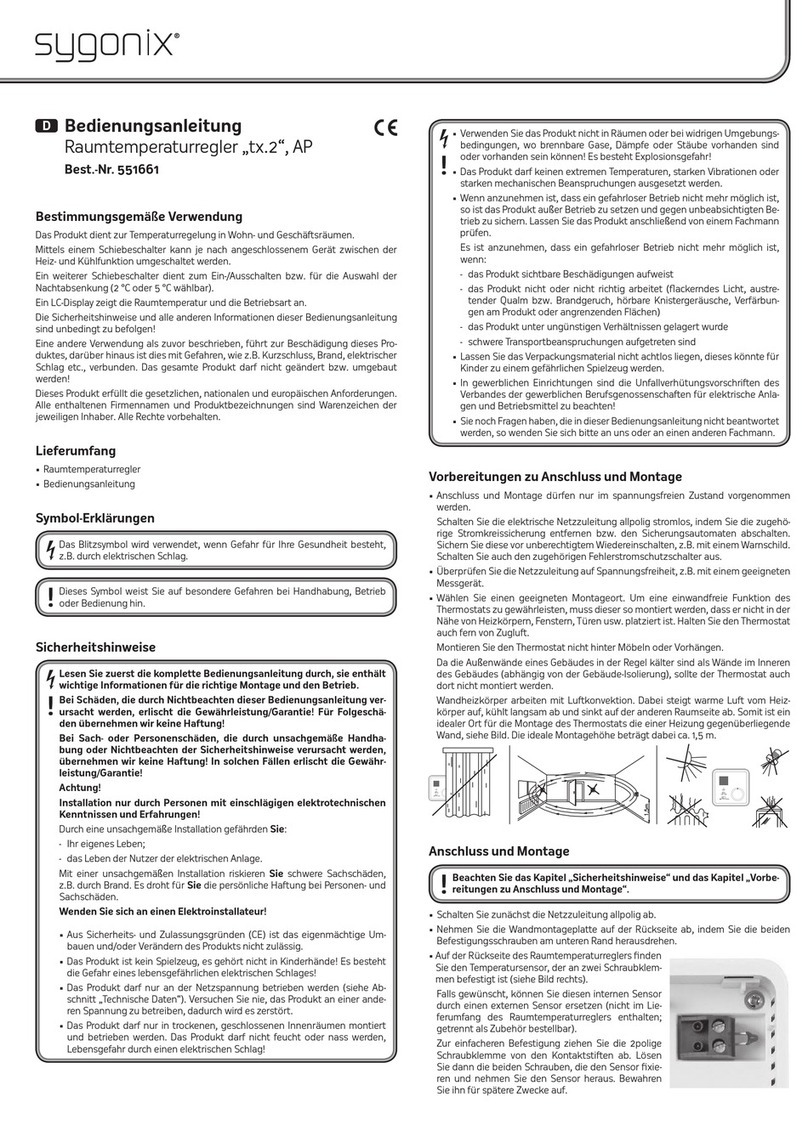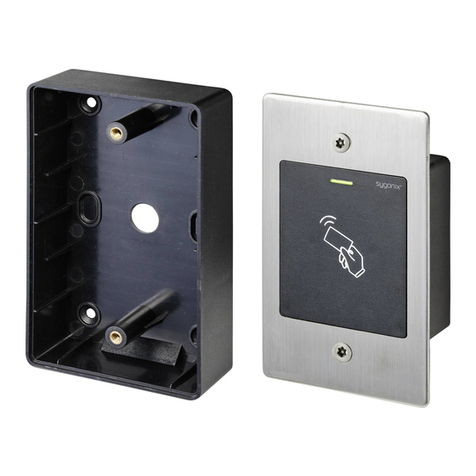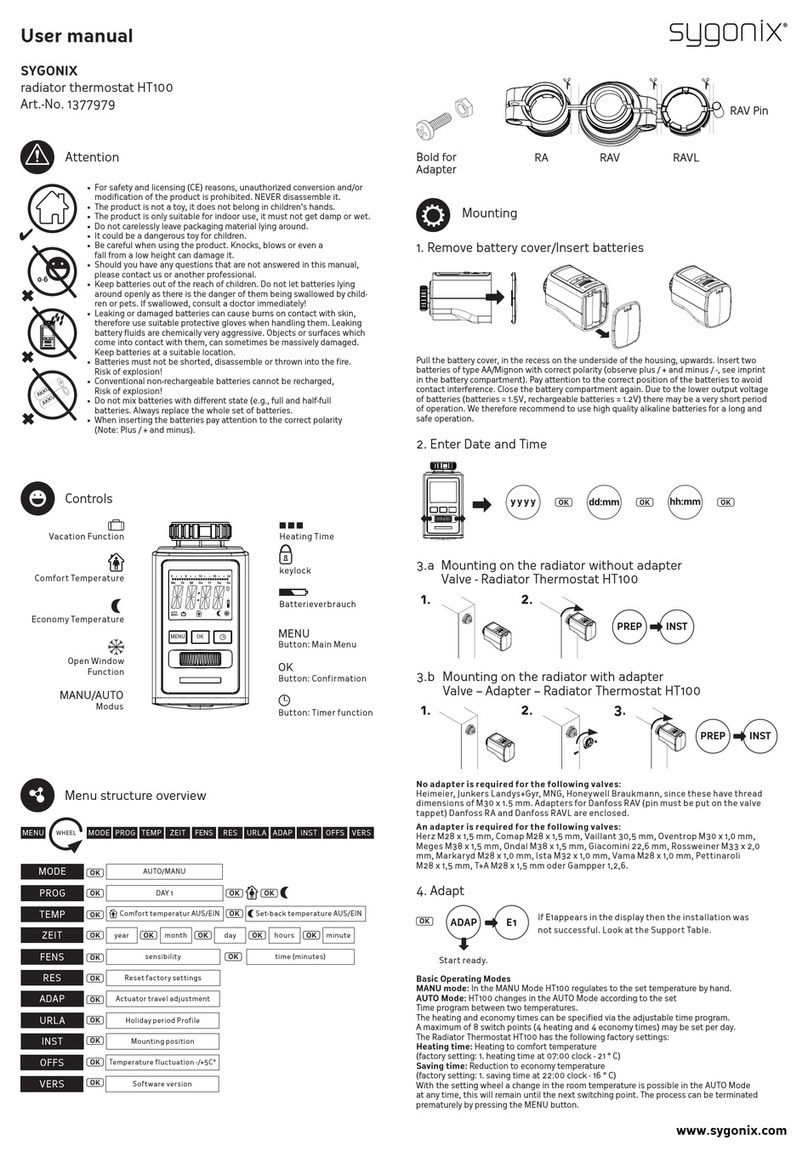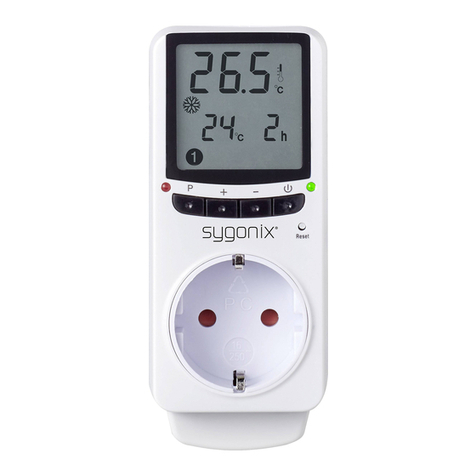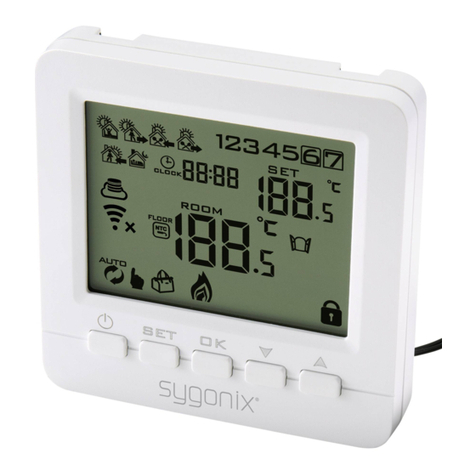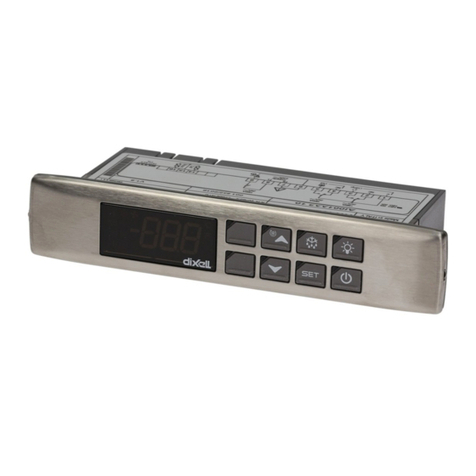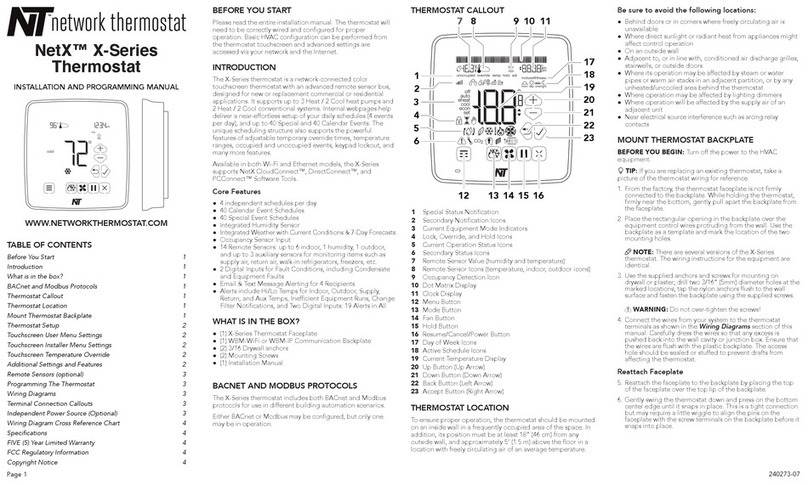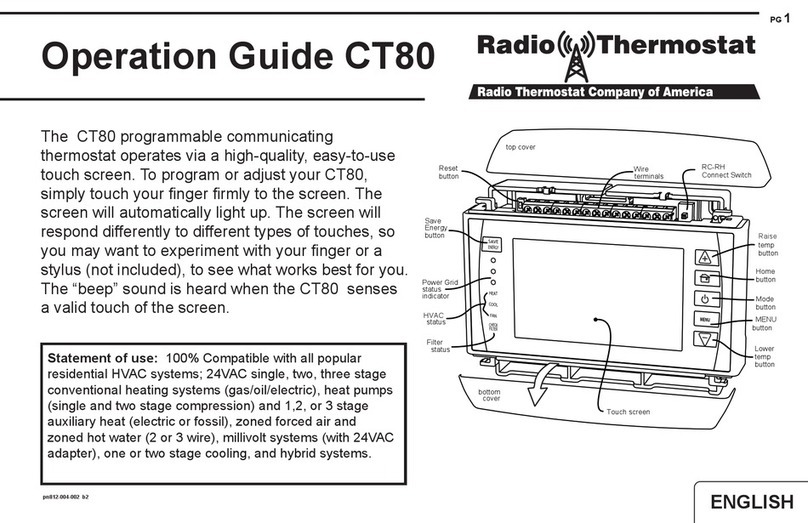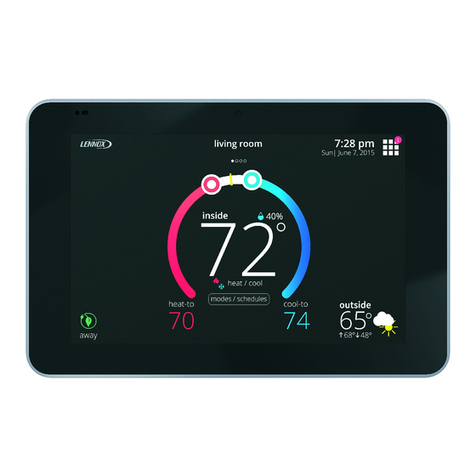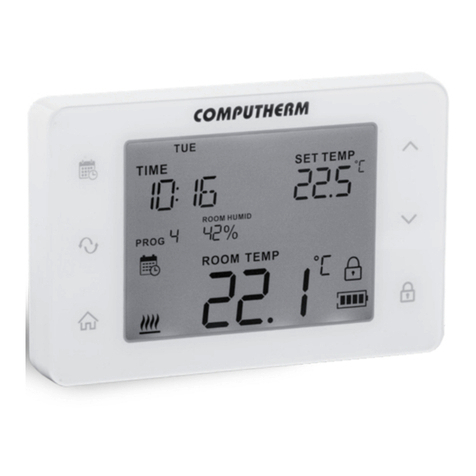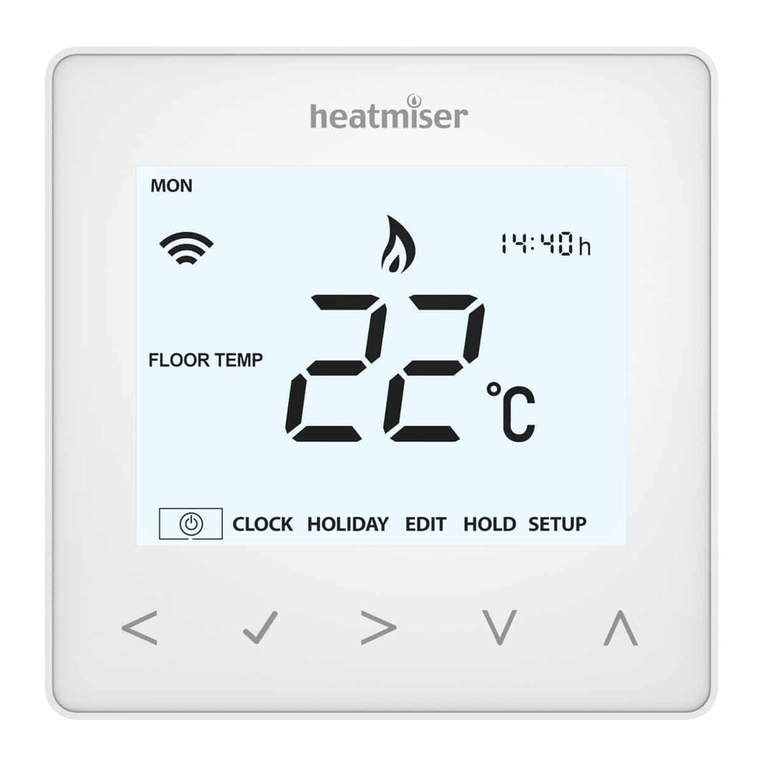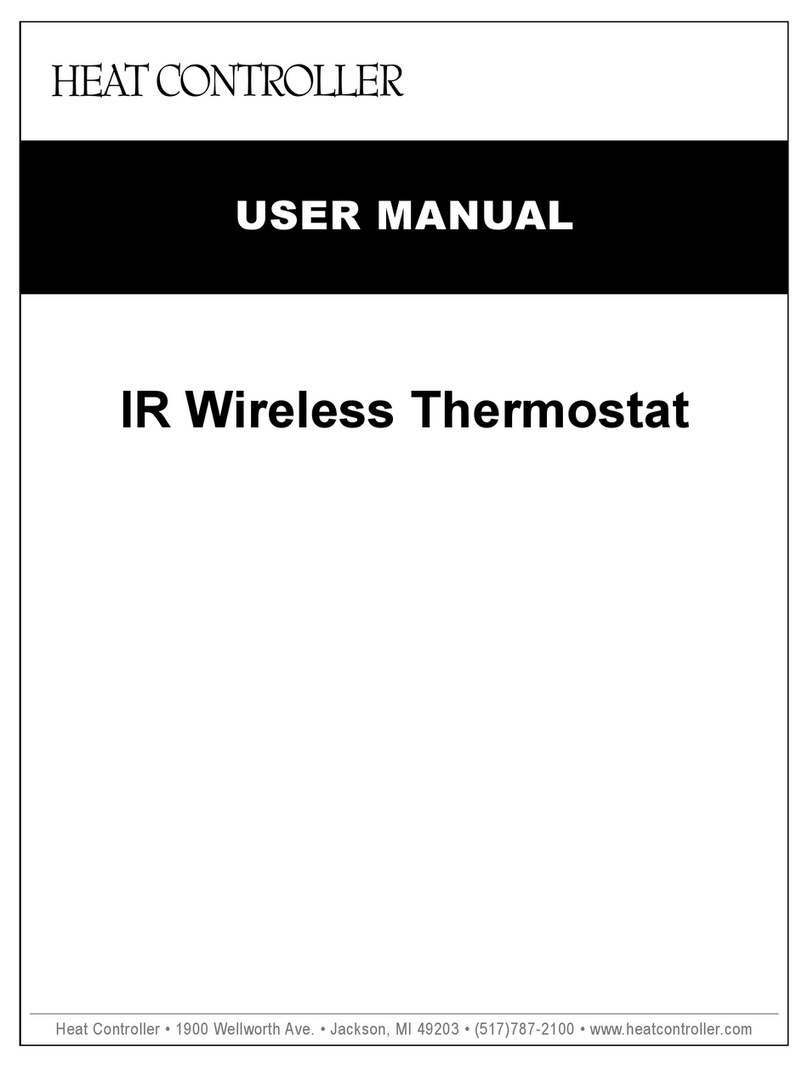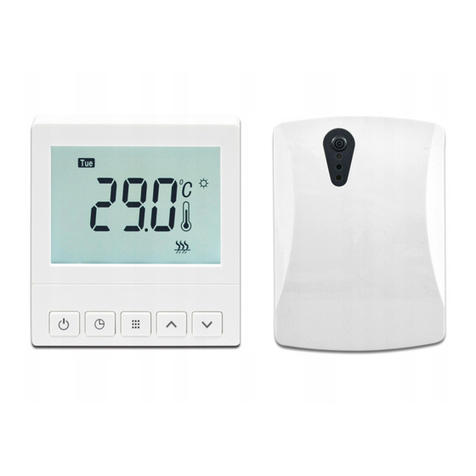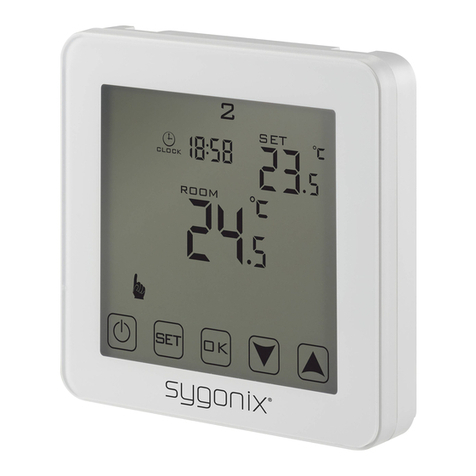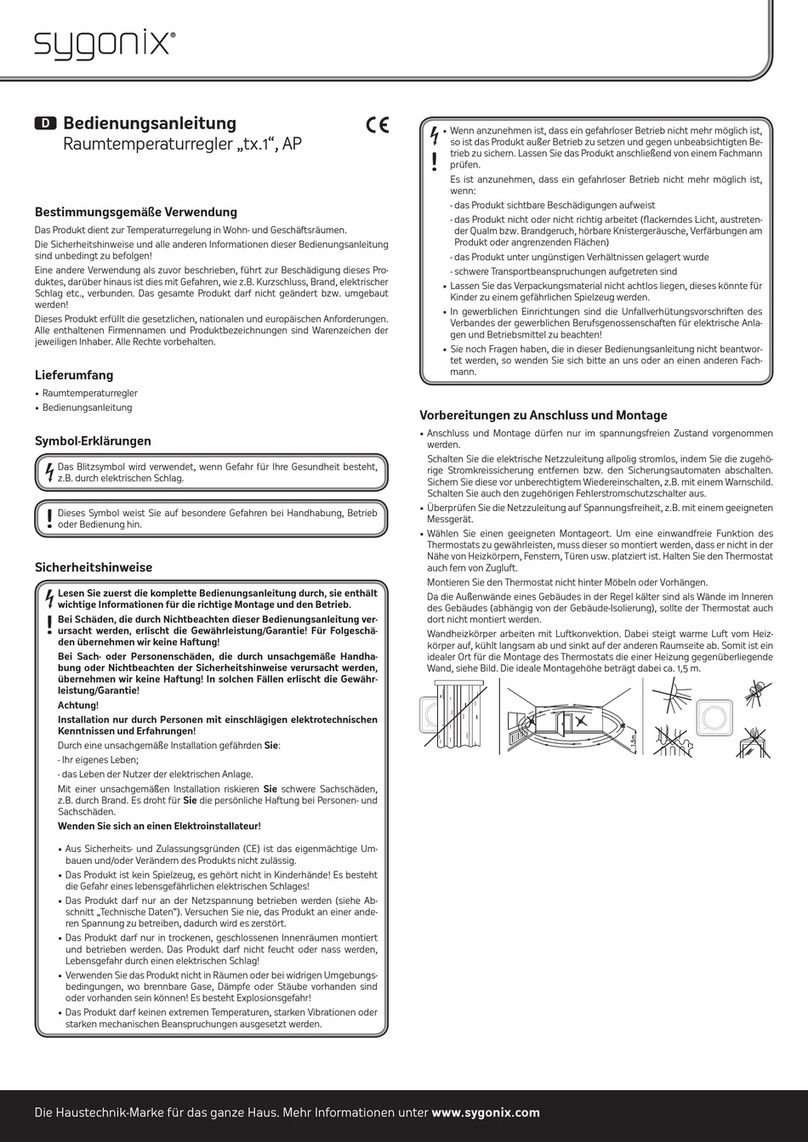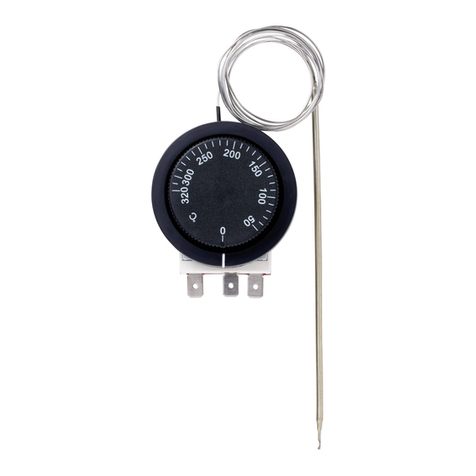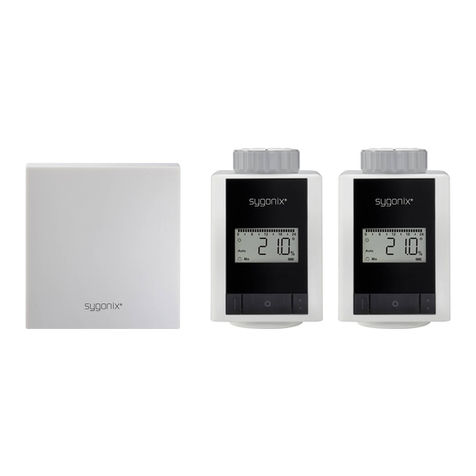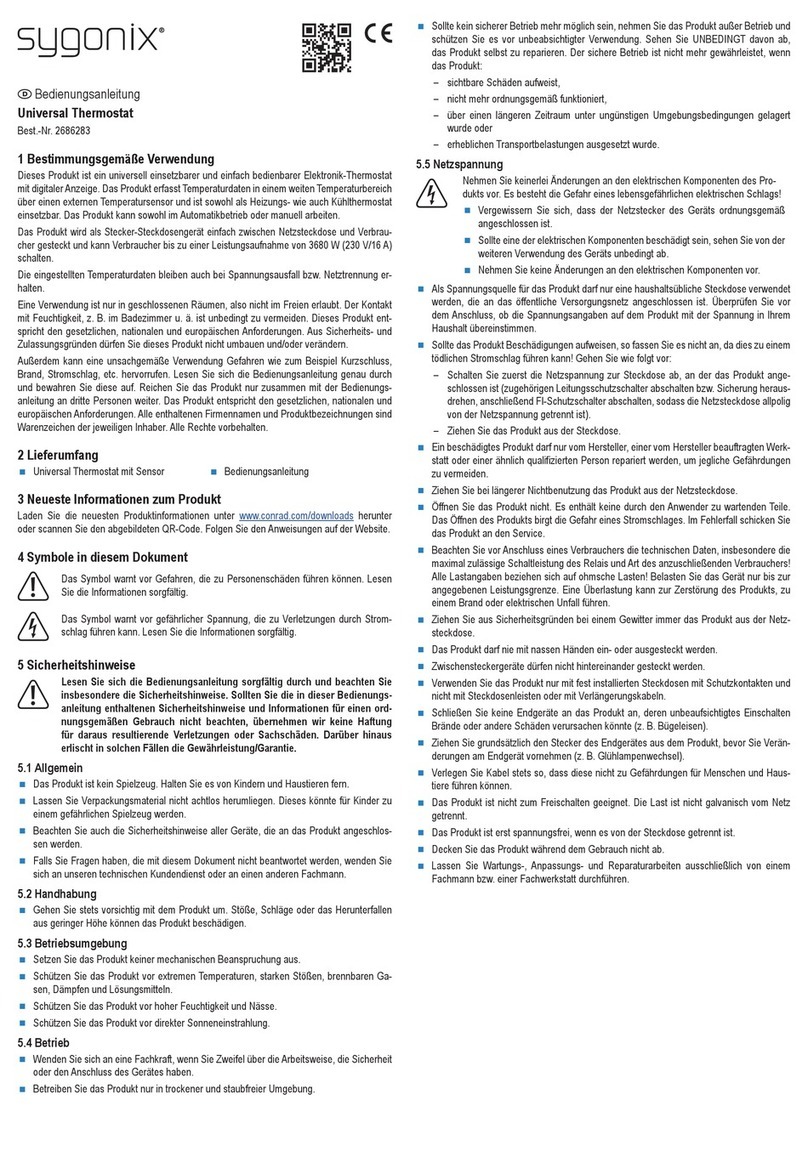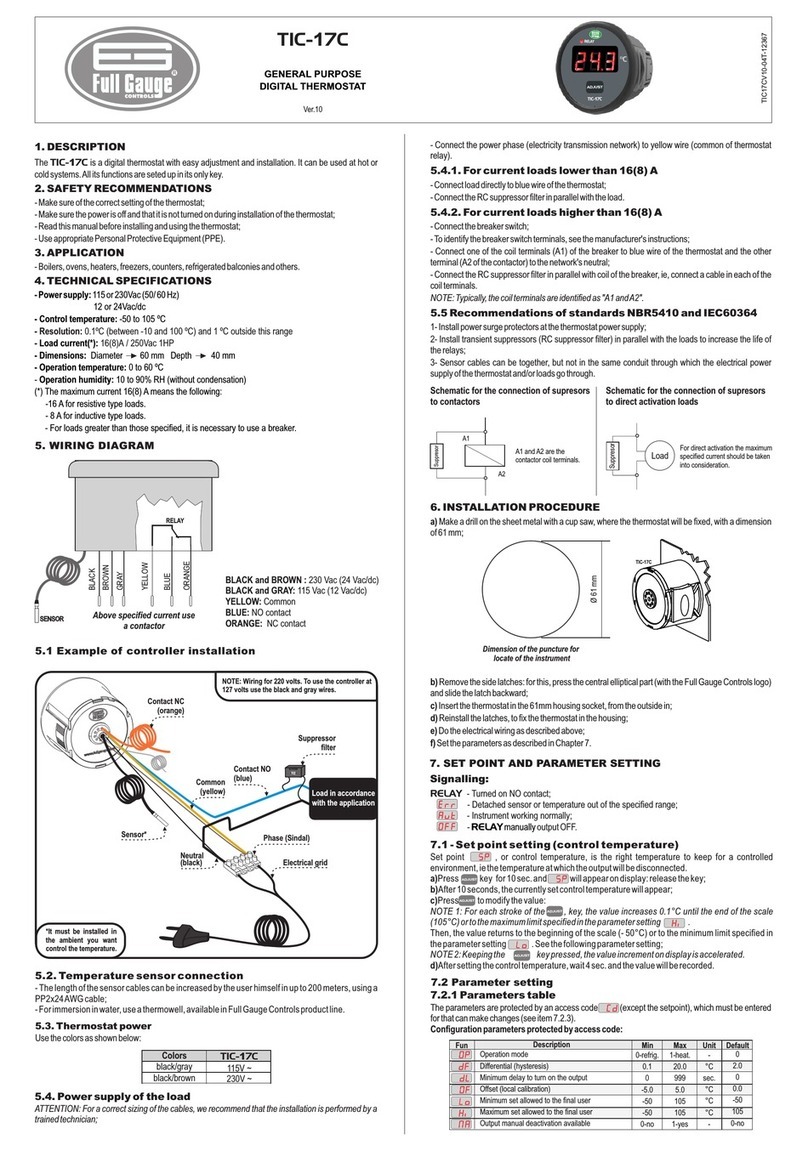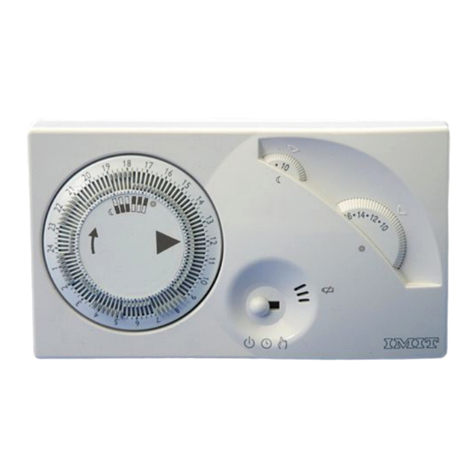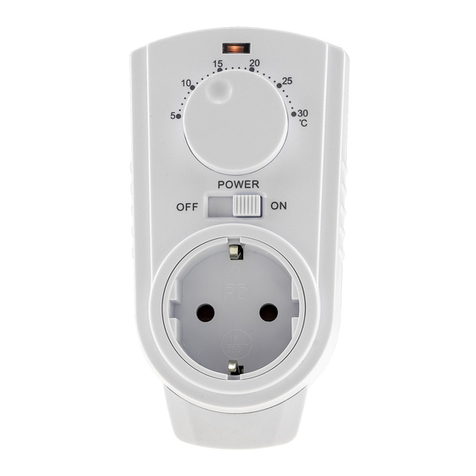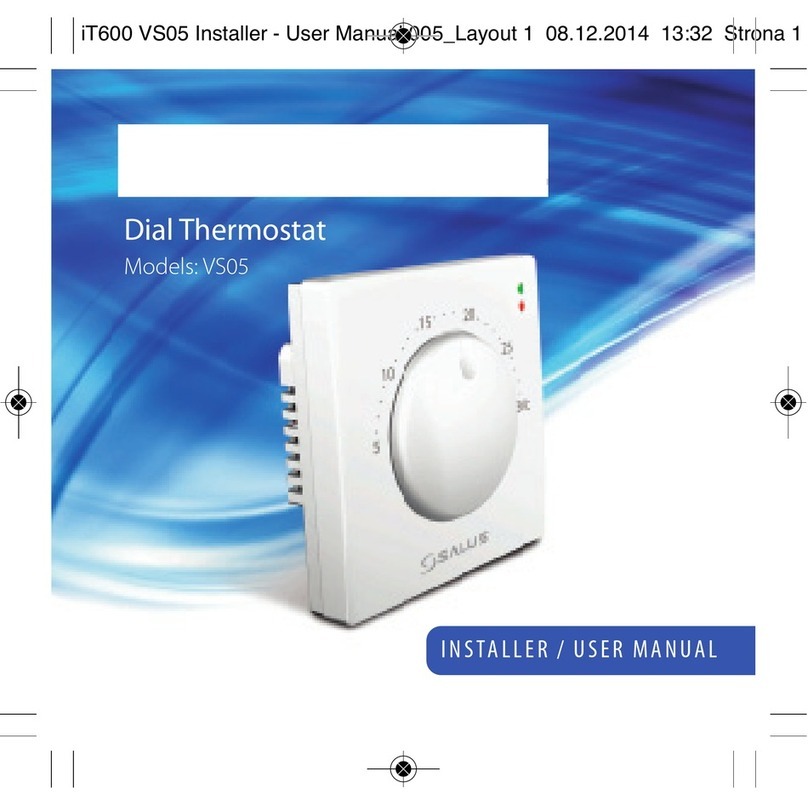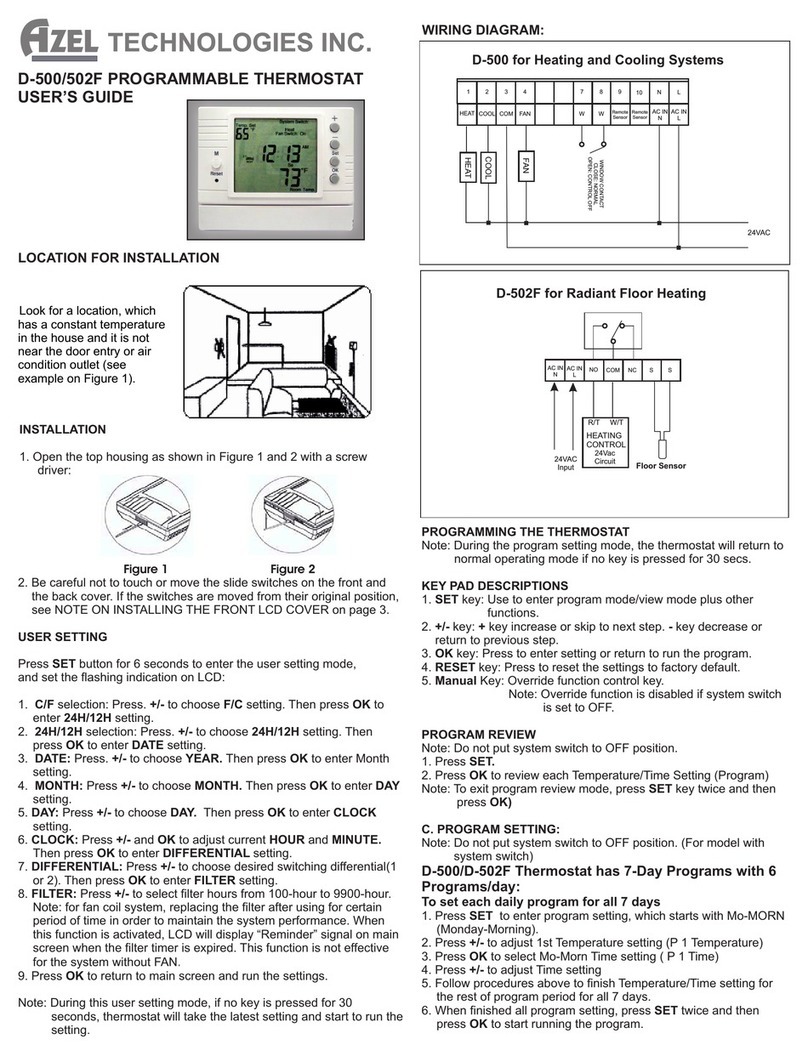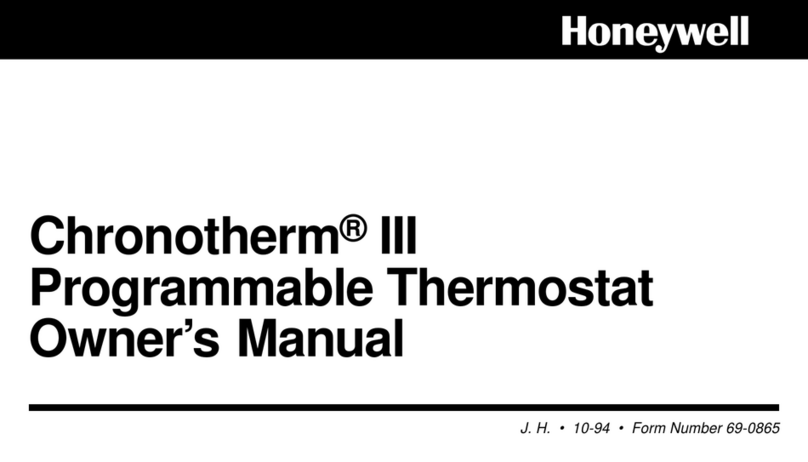
• Si une utilisation en toute sécurité ne peut plus être garantie, cessez d’utiliser le
produit et protégez-le contre toute utilisation accidentelle. Une utilisation en toute
sécurité n’est plus garantie si le produit :
- présente des traces de dommages visibles,
- ne fonctionne plus correctement,
- a été rangé dans des conditions inadéquates sur une longue durée, ou
- a été transporté dans des conditions très rudes.
• Adressez-vous à un technicien, si vous avez des doutes concernant le mode de
fonctionnement, la sécurité ou le branchement de l'appareil.
• Toute opération d’entretien, de réglage ou de réparation doit être effectuée par un
spécialiste ou un atelier spécialisé.
• Si vous avez encore des questions auxquelles ce mode d'emploi n'a pas su
répondre, nous vous prions de vous adresser à notre service technique ou à un
expert.
b) Installation/Raccordement
Attention, consigne importante !
L'installation et le branchement de ce produit ne doivent être effectués que par
des personnes ayant les connaissances et l'expérience pratiques nécessaires
pour la manipulation d'installations électriques ! *)
En cas d’installation incorrecte, vous risquez :
• votre propre vie
• la vie de celui qui met l'appareil électrique en service.
Une installation incorrecte peut générer de sérieux dommages matériels, causés par
un incendie, par exemple. Veuillez noter que vous pouvez être tenu personnellement
responsable en cas de dommages corporels et matériels.
Adressez-vous à un électricien qualié !
*) Connaissances techniques requises pour l’installation :
Pour l’installation, il faut en particulier disposer des connaissances techniques
suivantes :
• Les « 5 règles de sécurité » à appliquer : Mise hors tension ( isoler de l’alimentation
électrique) ; protéger contre la remise en service ; constater l'absence de tension
à tous les pôles ; mise à la terre et mise en court-circuit ; recouvrir ou délimiter les
pièces adjacentes sous tension.
• Utilisation d'outils, d'appareils de mesure et d'équipements de protection
individuelle appropriés, si nécessaire
• Évaluation des résultats de mesure
• Utilisation de matériel d'installation électrique pour garantir les conditions d'une
déconnexion sûre de l'alimentation électrique
• Classes de protection IP
• Montage de matériaux isolants électriques
• Type de réseau d’alimentation (système TN, système IT, système TT) et les
conditions de raccordement correspondantes (mise au neutre classique, mise à la
terre de protection, mesures complémentaires requises, etc.)
Si vous ne disposez pas de connaissances sufsantes dans l'un des domaines
mentionnés ci-dessus, vous devez absolument renoncer au montage et au
branchement indépendant et faire appel à un spécialiste.
Autres avertissements :
• Le produit est un appareil de classe de protection II (isolation renforcée ou double).
Il est important de veiller à ce que l’isolation du boîtier ne soit pas endommagée
ni détruite.
• Avant le montage, tous les pôles doivent être déconnectée de la tension secteur,
par exemple par un dispositif à courant résiduel. Entre le dispositif à courant
résiduel et le produit, il faut prévoir un fusible ou un disjoncteur dimensionné en
conséquence.
• Le raccordement et le montage doivent être effectués uniquement hors tension.
Pour ce faire, désactivez le disjoncteur de sécurité et le disjoncteur de courant
résiduel, ce qui permet de débrancher ou de mettre hors tension tous les pôles
de la tension secteur. Assurez-vous qu'ils ne puissent être remis en marche de
manière intempestive, mettez par exemple un panneau avertisseur. Contrôlez
ensuite l’absence de tension à l’aide d’un instrument de mesure approprié (p. ex.
un multimètre numérique).
• Ne branchez pas le produit à l’alimentation électrique immédiatement après l’avoir
transporté d'un environnement froid à un environnement chaud (par ex. pendant le
transport). L’eau de condensation qui en résulte pourrait éventuellement détruire
l’appareil. Il existe en outre un risque de décharge électrique !
• Attendez d´abord que le produit ait atteint la température ambiante au préalable
avant de le brancher. Attendez que l’eau s'évapore à nouveau. Cela peut
prendre plusieurs heures. Ce n’est qu’ensuite que l’appareil est monté, raccordé
à l’alimentation électrique et mis en service.
c) Indice de protection
• Le produit ou son boîtier est conforme à l'indice de protection IP20 et convient
uniquement pour un fonctionnement dans une zone intérieure sèche.
• Il n'y a pas de protection contre l'eau, les gaz inammables et les vapeurs
Mode d’emploi
Thermostat d’ambiance numérique programmable
avec panneau tactile
N° de commande 2353939
Utilisation prévue
Ce produit est un thermostat de chauffage conçu pour la régulation de la température en
association avec un chauffage électrique. Pour mettre le produit en service, il doit être branché
directement à la tension du secteur. Un consommateur fonctionnant également via le secteur
peut ensuite être connecté à celui-ci et activé ou désactivé en régulant la température.
Le thermostat de chauffage est équipé d'un capteur interne et d'un capteur externe (sonde).
Le capteur externe est conçu pour mesurer la température dans un endroit différent de celui du
thermostat, par exemple au sol en cas de chauffage électrique au sol.
Le produit dispose également d'un verrouillage des touches qui peut être activé pour protéger
contre les erreurs de manipulation et d'une mémoire pour sauvegarder les données en cas de
panne de courant.
Le produit est conforme à la classe de protection IP20 et convient uniquement pour un
montage dans un intérieur sec. Ne l’utilisez pas en plein air. Évitez impérativement tout contact
avec l'humidité, par ex. dans la salle de bains, etc.
Pour des raisons de sécurité et d’homologation, toute transformation et/ou modication du
produit est interdite. Toute utilisation à des ns autres que celles décrites ci-dessus pourrait
endommager le produit. En plus, une utilisation incorrecte peut générer des risques comme par
ex. un court-circuit, un incendie, une électrocution, etc. Lisez attentivement le mode d’emploi
et conservez-le dans un endroit sûr. Ne remettez le produit à un tiers qu’accompagné de son
mode d’emploi.
Le produit est conforme aux exigences des directives européennes et nationales en vigueur.
Tous les noms d’entreprises et appellations de produits contenus dans ce mode d’emploi sont
des marques déposées de leurs propriétaires respectifs. Tous droits réservés.
Contenu d’emballage
• Thermostat
• 2 vis
• Capteur externe
• Mode d'emploi
Modes d'emploi actuels
Téléchargez les modes d’emploi actualisés via le lien www.conrad.
com/downloads ou scannez le Code QR illustré. Suivez les instructions
disponibles sur le site Internet.
Explication des symboles
Le symbole de l’éclair dans un triangle indique un risque pour votre santé, par ex. un
risque d'électrocution.
Le symbole du point d’exclamation dans un triangle attire l’attention sur les
consignes importantes du mode d’emploi à respecter impérativement.
Le symbole de la èche précède les conseils et remarques spéciques à l’utilisation.
L'appareil ne peut être utilisé que dans des locaux secs et fermés. Il convient de
préserver l’appareil de l’eau et de l’humidité. Dans le cas contraire, vous courez un
danger de mort par électrocution !
Consignes de sécurité
Lisez attentivement le mode d’emploi dans son intégralité, en étant
particulièrement attentif aux consignes de sécurité. Nous déclinons toute
responsabilité en cas de dommage corporel ou matériel résultant du non-
respect des consignes de sécurité et des instructions d’utilisation de ce mode
d’emploi. En outre, la garantie est annulée dans de tels cas.
a) Généralités
• Ce produit n’est pas un jouet. Gardez-la hors de portée des enfants et des
animaux domestiques.
• Ne laissez pas traîner le matériel d’emballage. Cela pourrait constituer un jouet
très dangereux pour les enfants.
• Manipulez le produit avec précaution. Les chocs, les coups et les chutes, même
d’une faible hauteur, sufsent pour endommager l’appareil.
• Le produit ne doit pas être exposé à des températures extrêmes, à la lumière
directe du soleil, à des secousses intenses, à une humidité élevée, à l’eau, à des
gaz inammables, à des vapeurs et à des solvants.
• N’exposez pas le produit à des contraintes mécaniques.
